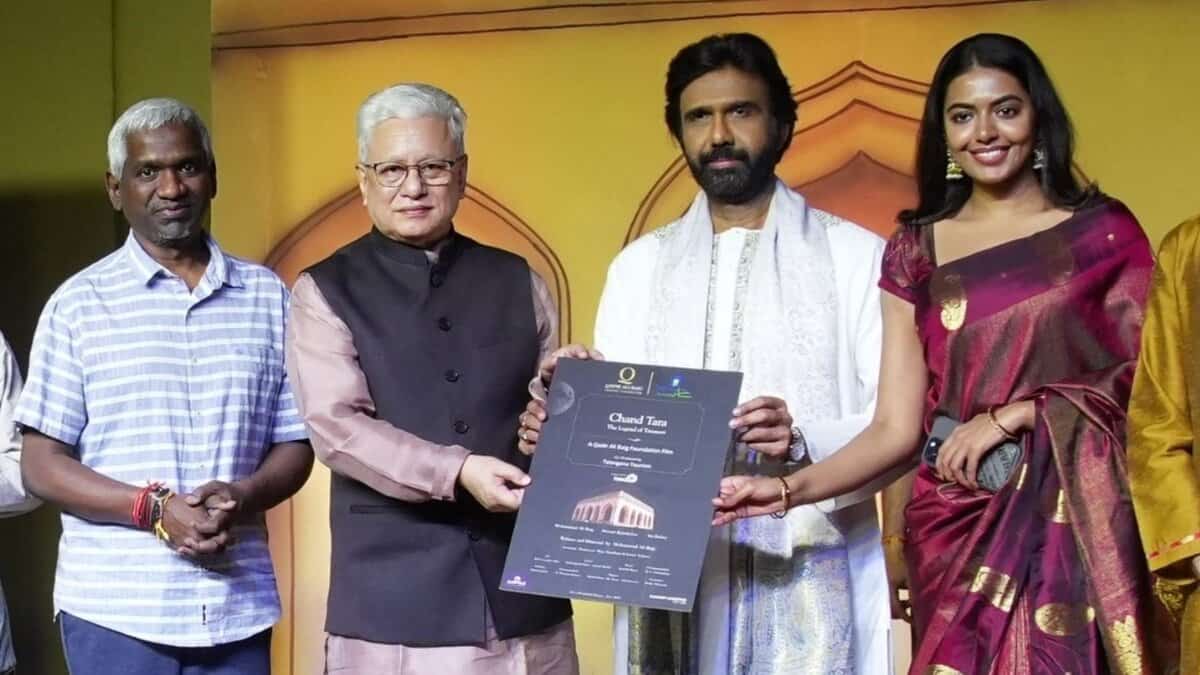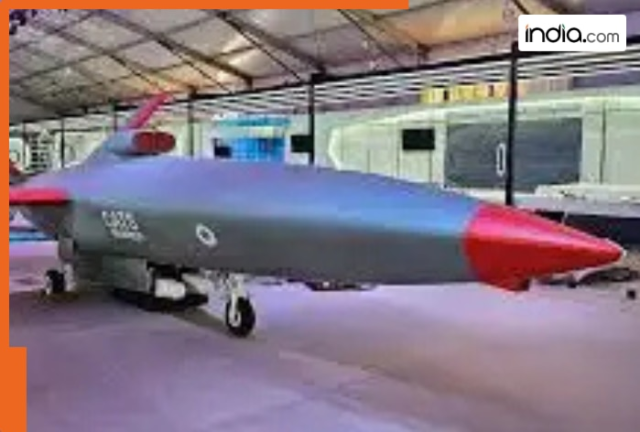Hindustan Aeronautics Limited is making steady progress in developing the Combat Air Teaming System (CATS) Warrior, a plan where manned and unmanned aircraft work together as a team during missions.
Experts believe that the lower cost of the drone makes it suitable for widespread use. It boosts military strength without putting too much pressure on the country’s defence budget. They also highlighted the need to include more private companies to ensure fast and large-scale production.
Hindustan Aeronautics Limited (HAL), a government-run aerospace company, is making steady progress in developing the Combat Air Teaming System (CATS) Warrior, a plan where manned and unmanned aircraft work together as a team during missions. This is a smart drone built to fly along with fighter jets that have pilots. The CATS Warrior was displayed as a full-size model at the ‘Aero India 2025’ show, representing an important step forward in India’s efforts in building its own unmanned aircraft technology.
According to online media platform Defence.in, this project is making good progress because the drone is cost-effective and has caught the attention of the Indian Air Force (IAF). To reach its goal of building around 100 units each year, HAL is working closely with private companies and growing its partnerships with them. However, while the IAF is likely to place big orders, the final count will be decided after an official assessment.
Even though the CATS Warrior project is moving forward with hope and good progress, its future success depends largely upon how well it performs in the forthcoming IAF tests. These important trials will help decide whether the programme can move ahead on a larger scale. The first flight of the aircraft is expected to take place by late-2025 or early-2026, after which the testing will begin.
CATS Warrior a ‘Force Multiplier’
Designed to act as a ‘force multiplier’, this drone will help improve the performance of the IAF’s current fighter jets, which include India’s own Tejas, along with such imported aircraft as the Su-30 MKI and Rafale. The drone is expected to carry out a variety of tasks, such as attacking targets deep inside enemy areas and offering support, and protection, to the fighter jets it flies alongside.
To support this project, HAL is working with private companies and making use of their expertise in such areas as carbon fibre composite materials—often called CFRPs, are lightweight, yet strong, materials made by combining thin carbon fibres with a resin matrix, known for their high strength-to-weight ratio and corrosion resistance—advanced electronics, and precision engineering.
A key milestone in this partnership was when Tata Advanced Systems handed over a prototype of the CATS Warrior’s airframe structure to HAL in February 2025. This shows that a strong supply chain is being built to support the project.
One major reason that the CATS Warrior stands out is its expected cost, estimated to be between $5 million (around ₹42.5 crore) and $10 million (around ₹85 crore) per unit. This is much cheaper compared to modern manned fighter jets, which may cost anywhere between $50 million (about ₹425 crore) and over $100 million (about ₹850 crore) each.
Experts believe that the lower cost of the drone makes it suitable for widespread use. It boosts military strength without putting too much pressure on the country’s defence budget. They also highlighted the need to include more private companies to ensure fast and large-scale production.
The IAF currently has 31 fighter squadrons, while the approved requirement is 42. So, the CATS Warrior is seen as a game-changing addition that could greatly boost the IAF’s overall strength and capabilities.
Manned-Unmanned Teaming Set-up
The CATS Warrior is designed to work in a system called ‘manned-unmanned teaming’. In this setup, a pilot flying a regular fighter jet can control, and guide, a few unmanned CATS Warrior drones—usually around three or four—to carry out missions together. These drones can be given different tasks, such as gathering information, carrying out precise attacks, or using electronic warfare to jam enemy systems. This boosts the mission’s success while keeping the human pilot out of danger.
This idea is in line with what other countries are doing. Take the United States’ Skyborg program, for instance, or Australia’s MQ-28 Ghost Bat project. These efforts show a global trend where air forces are using drones more and more to deal with advanced enemy air defence systems. The goal is to make air missions safer, and more effective, by using unmanned systems alongside fighter jets.
Skyborg: The Smart Combat Drones
The Skyborg program is a US Air Force effort to build self-flying drones powered by artificial intelligence (AI). These smart drones are designed to fly alongside such fighter jets as the F-35 and F-15EX. They can carry out such missions as combat, spying (reconnaissance) and jamming enemy signals (electronic warfare). Instead of a fixed number, the plan is to have a flexible group—usually four to five drones working with each manned aircraft.
The drones are connected through a system called the Autonomy Core System (ACS), which acts as a portable brain. It allows the drones to communicate with each other, and with pilots using advanced data networks. Such models as the Kratos XQ-58A Valkyrie and General Atomics’s MQ-20 Avenger are part of the program. These drones are affordable, reusable, and quickly built—helping complete missions while reducing risks to human pilots.
India’s Ambitious Drone Takes Flight
HAL says that, once the CATS Warrior project reaches full production capacity, its factories will be able to build up to 100 units each year. This would be enough to meet the IAF’s needs and could also create a chance to sell these drones to other countries in future.
The development, and production, of the CATS Warrior involve several private companies that provide different parts and components. These companies are working together with HAL’s in-house research and design centres, such as the Strategic Electronics Research & Design Centre (SLRDC) in Hyderabad and the Aircraft Research & Design Centre (AERDC) in Bengaluru. These centres are responsible for creating important systems, including the engine. This shared approach is meant to make use of the skills and knowledge available across India’s defence industry.
Careful Testing by IAF on the Cards
The IAF will carefully test some important features of the CATS Warrior. These include how well its automatic take-off and landing system works, how much equipment or weapons it can carry during missions and how strong and secure its data connections are. These data links are important for smooth teamwork between the drone and manned fighter jets.
If the trials go well, the IAF may place large orders for hundreds of CATS Warrior units. This could bring major changes to how the IAF plans, and carries out, its missions in future.
(The author Girish Linganna of this article is an award-winning Science Writer and a Defence, Aerospace & Political Analyst based in Bengaluru. He is also Director of ADD Engineering Components, India, Pvt. Ltd, a subsidiary of ADD Engineering GmbH, Germany. You can reach him at: girishlinganna@gmail.com)

















































